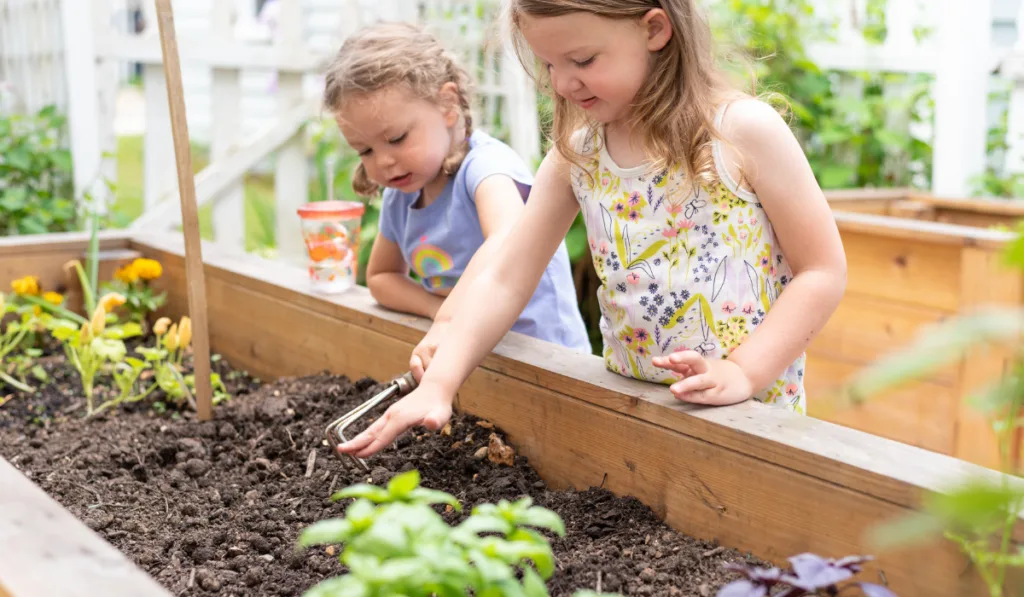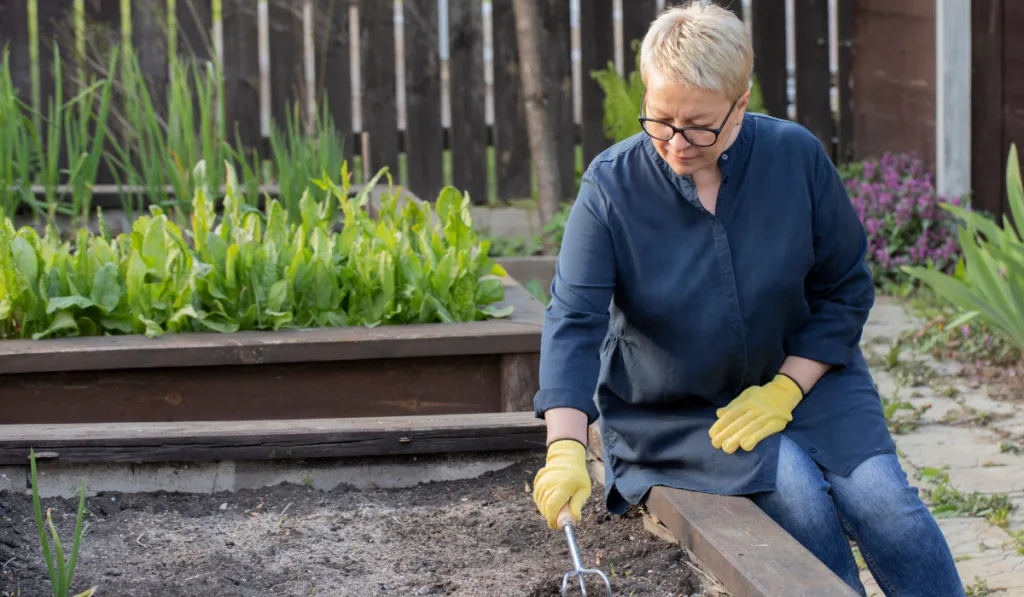Anyone who’s tried their hand at gardening knows it’s not that easy. Growing up, you learn that all plants need are some water, dirt, and a bit of sunshine, and the next thing you know, you’re chomping on delicious homegrown watermelon straight from your garden. In reality, it’s not so simple.
Gardening success depends on several factors including where you live, what you plant, what type of setup you have, and what kind of soil you seed.

One of the biggest questions we get is, “What type of soil works best in raised beds?”
Certainly, the right soil will make your job a lot easier, and you’ll see results faster. Great soil will help cover up some rookie mistakes and improve your yield each season.
Of course, there are issues around choosing soil like price, ingredients, and longevity.
The right soil for a raised bed garden is the one that fits your budget and gets the job done. It will keep you gardening and get you the vegetables and herbs you want depending on your climate.
Here are some things you should consider when you’re starting or need to replace your soil.
Table of Contents
Always Go with Quality
One of the best things about raised beds is that you have more control over your soil. You can add and monitor moisture levels without worrying about how it will impact your yard.
Caring for a smaller amount of soil in your raised bed instead of larger areas that may have historical issues with dryness or oxygen is also an advantage.
Smaller areas mean you can opt for quality. We always recommend buying the best quality for your budget.
It should make sense, though, so don’t do something like going into debt to fill your garden beds. Set a budget and buy the best possible soil you can find in that price range.
Good soil will yield more cucumbers, tomatoes, or whatever else you’re growing, often multiples of what you would get in lower-quality soil. Your plants will be healthier and they’ll live longer.
It will also be much more forgiving if you overwater or forget to tend to the garden once in a while.
Different Soil Types to Consider

What are the different types of soil? If you walk into your neighborhood home and garden center, there will be a lot of choices. Much of it will be confusing for rookie gardeners.
Here are some basic soil types you’ll find:
- Loamy Soil – This type of soil is a popular gardening soil. It’s a mix of silty soils with some sandy and clay soils tossed in. It’s typically full of nutrients and microorganisms that your plants will love. Loamy soil is, understandably, more expensive than some other soil types.
- Clay Soil – If you can’t quite manage the premium loamy soil, clay soil can do the trick. Clay soil particles are smaller, making it more compact. That means it can keep water better and other nutrients your plants need to grow. The compactness can be a concern if you’re growing plants that need a lot of space to grow roots. Sometimes the clay soil gets too hard and compact and stops the roots in their tracks.
- Sandy Soil – Sandy soil has a consistency similar to that of sand. It has the largest grains of the soil types, making it a good choice for plants that need good drainage. If you’re planting vegetables susceptible to root rot, then sandy soil is an ideal soil type.
- Silty Soil – This medium-sized particle soil holds water very well and is generally very fertile. It has particles similar in size to clay soil, so there are some of the same risks of compacting. Gardeners just need to make sure they don’t put too much silty soil in a small area to keep the soil properly spaced.
For raised beds, most people go with loamy soil because it’s the most fertile, will last longer, and will usually yield more crops.
It is, however, the most expensive, so the type of soil you choose will depend on how much you need and what you are planting.
How to Figure Out How Much Soil You Need for a Raised Bed
How much soil you need for your raised bed garden will also influence the type of soil you choose. For smaller raised beds, choosing the costlier loamy soil might be an easy call, but what if you’re planting a large garden?

The basic rule of thumb here, no matter how big your garden is, is that you’re going to want to fill the bottom of your raised beds with compost until it’s around half-full. Then, the rest of it will be soil.
Don’t worry, you can buy compost, fertilizer, and other supplies from the store. Once you know for sure that gardening is for you, you can start worrying about the home composting pile.
A lot of people wonder if skipping the compost is a good idea. Should you use soil mixture? While it’s certainly possible that you’ll see good growth with something like loamy soil, the compost-soil mixture is the best way to go. Using soil mixtures is always a bit of an art.
You can play around with different mixtures and see how the plants react and adjust from there.
For most people starting with raised beds, foot-high walls are a good place to start. Remember, the higher you go, the more money you’re going to spend on soil, compost, and whatever else you’re going to need in terms of supplies.
Most people are surprised at just how much soil is required to fill a raised bed. Those big soil bags look huge when you pick them up at the store, but they don’t go as far as you’d think when you start emptying them into your garden.
Use an Online Calculator to Determine How Much Soil You Need
Thankfully, we live in an age where information is easily accessed online.
If you want to know exactly how much soil you’re going to need based on a certain raised bed size, then there are calculators online where you can punch in dimensions and it will spit out an estimate of how many cubic feet of soil you will need.
For example, a raised bed that is one foot deep, six feet long, and three feet wide will need approximately 18 cubic feet of soil to fill it up. Then, you can shop for bags in your home and garden store to get the perfect amount.

Additionally, the employees at garden outlets are typically well-versed when it comes to how much soil customers need. Just tell them how big your raised beds are or will be and they’ll set you straight.
They are also a fantastic resource to use because they’ve been around. They know how the local climate affects different soil types, and what soils will work best with whatever you’re trying to grow.
Final Thoughts
With the right soil, your garden will start producing more and bear fruit faster.
The feeling of a growing, thriving garden is hard to match, and it gets millions of Americans out in their yards at work every year trying to do better than the year before.
